From the sweet fragrance of Jasmine to the lush beauty of Gardenia, adding gorgeous flowers to your garden can be a daunting task. But fret not! Here you will find an in-depth guide for both Gardenia and Jasmine, detailing their advantages and disadvantages so that you can choose between them with confidence. So if you’re looking for the best addition to your garden, read on to learn more about Gardenia vs. Jasmine!
Differences Between Gardenia and Jasmine
When deciding which of these two beautiful flowers to plant in your garden, there are a few things you should consider.
Gardenias have an unmistakable scent and look that many find irresistible. They are usually white or pinkish-white with glossy leaves and a light fragrance — but the petals can be creamy yellow too! Gardenias also tend to bloom more reliably than jasmine, meaning they will produce flowers year-round if cared for properly. Unfortunately, gardenias do not typically grow very large, so they may require some special care to make sure it’s thriving.
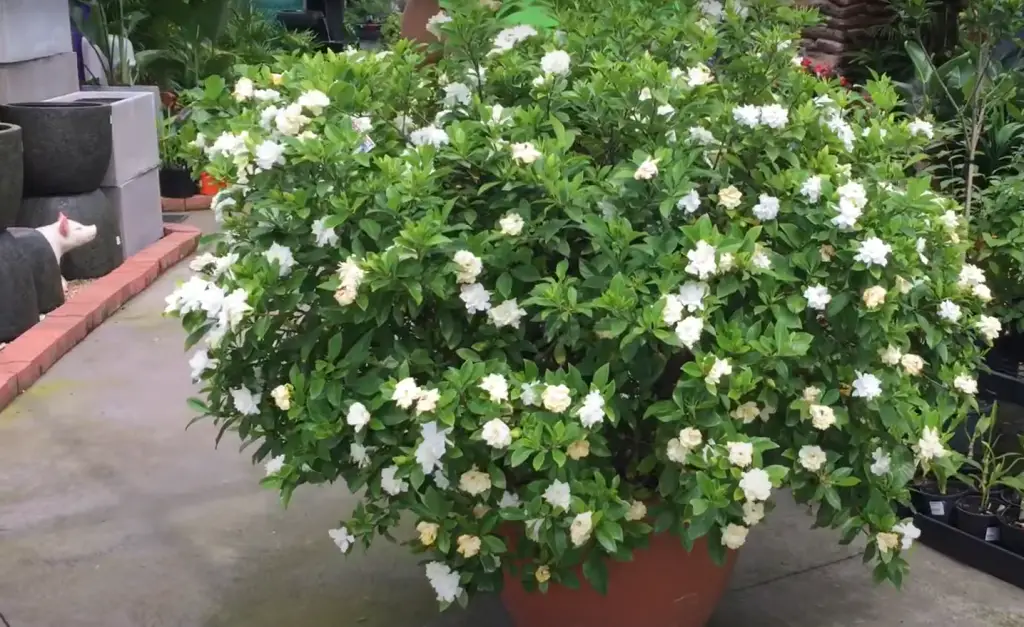
Jasmine has its own unique charm and beauty as well. It is usually creamy white in color, but can also range from light yellow to pink, depending on the variety. Jasmine blooms reliably in most climates and can grow up to six feet tall with proper care. It has a more intense fragrance than gardenia, making it a great choice for those seeking an intoxicating scent from their garden flowers!
Planting Season
When it comes to the best planting season, there is a slight difference between Gardenia and Jasmine. Gardenias thrive in warmer temperatures and should be planted in early spring, while jasmines prefer cooler temperatures and should ideally be planted in the late winter or early spring. Both plants need at least 6 hours of direct sun each day and plenty of water.
Flowering Season
Gardenias bloom in late spring and early summer while Jasmine blooms at the end of winter or the start of spring. Both plants produce beautiful white flowers that can add a stunning display of color to your garden.
Planting Zone
Gardenias are best suited for growing in USDA planting zones 7-11. They can tolerate some cold temperatures, but they will not be able to survive a hard frost. Jasmine plants thrive best in warmer climates and should only be planted in USDA zones 8-11.
Scent
Gardenia and jasmine plants are both known for their beautiful fragrances. Gardenia has a sweet smell that some describe as similar to roses or lilies, while jasmine’s fragrance is more earthy and musky.
If you’re looking for something with a stronger scent, go with gardenia, but if you want something more subtle then opt for jasmine. Whichever one you choose, your garden will be filled with lovely aromas!Stems & Branches
Gardenia and jasmine both have stems and branches that can grow up to various heights depending on the type of plant. Gardenias typically reach a height of about 3 feet, while jasmine plants can climb up to 8 feet or even higher. When it comes to stems and branches, gardenias usually have thicker, fleshy stems with glossy leaves that are very attractive.
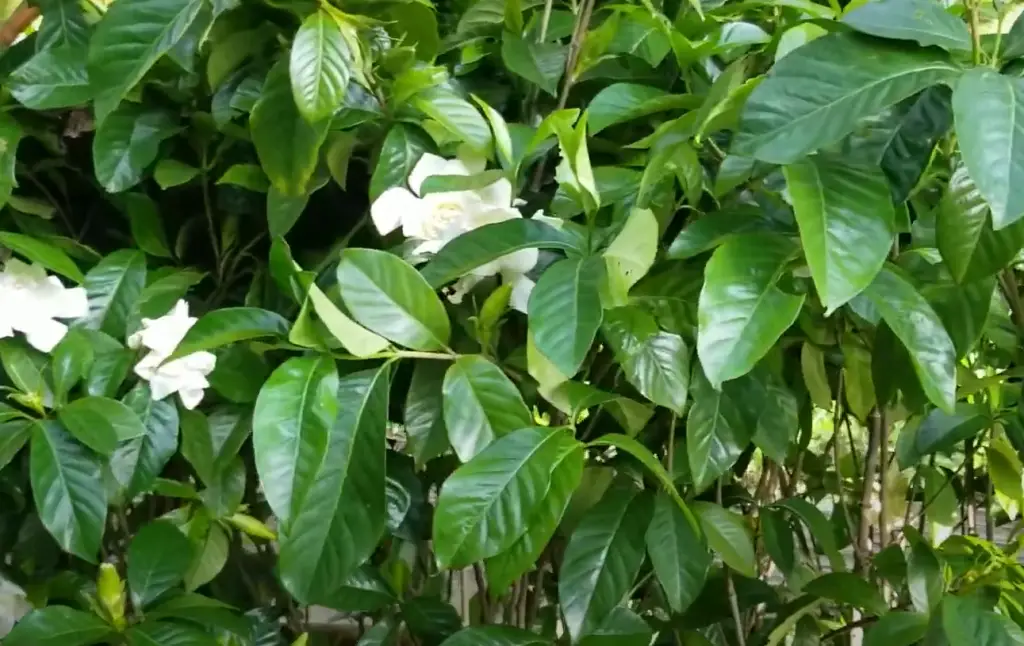
Jasmines, on the other hand, tend to have thinner stems with more flexible foliage. Additionally, gardenias produce attractive white flowers in clusters throughout the growing season while jasmines are known for their fragrant blooms which come in many different colors including white, yellow, pink and purple. Both plants require pruning at least twice a year to maintain their shape and encourage new growth.
Bloom Pattern
Gardenias bloom in late spring to early summer with a few flowers blooming into the fall. They have intensely fragrant, single or double white blooms. Jasmines, on the other hand, grow in clusters of small white or yellowish-white flowers that bloom from midsummer to early fall. While jasmine has a mild, sweet fragrance, it’s much more subtle than the strong scent of gardenia flowers.
If you’re looking for fragrance and bright petals that will last all season long, then gardenias are probably your best bet. But if you want something with a longer flowering period and just a light touch of sweetness in its scent, then go with jasmine. Whichever you choose, they’re both sure to add a bit of beauty and fragrance to your garden!
Leaves
Gardenia and jasmine both have glossy, green leaves that are a pleasing aesthetic to any garden. Gardenias have thin pointed leaves while jasmine’s leaves often appear oval-shaped and waxy. Jasmine is also known for its bright foliage, which gives off a sharp contrast with its white flowers.
Though both plants require minimal care when it comes to their leaves, jasmine requires slightly more attention as it’s prone to developing mildew or rust if not kept in check. On the other hand, gardenias naturally have an oil on their foliage that helps protect them from pests and diseases. [1]
When choosing between the two plants for your garden, think about how much time you’re willing to spend on maintenance and choose the plant that suits your needs. If you’re looking for something that’s low-maintenance, gardenia is the better choice; however, if you don’t mind a bit more upkeep, jasmine can provide a beautiful contrast of foliage with its bright white flowers.
Sun Requirements
Gardenias prefer full sun for most of the day, though some varieties may tolerate partial shade. Jasmines, on the other hand, prefer full sun but can also tolerate partial shade as well. Both plants require lots of sunlight in order to flower properly and stay healthy.
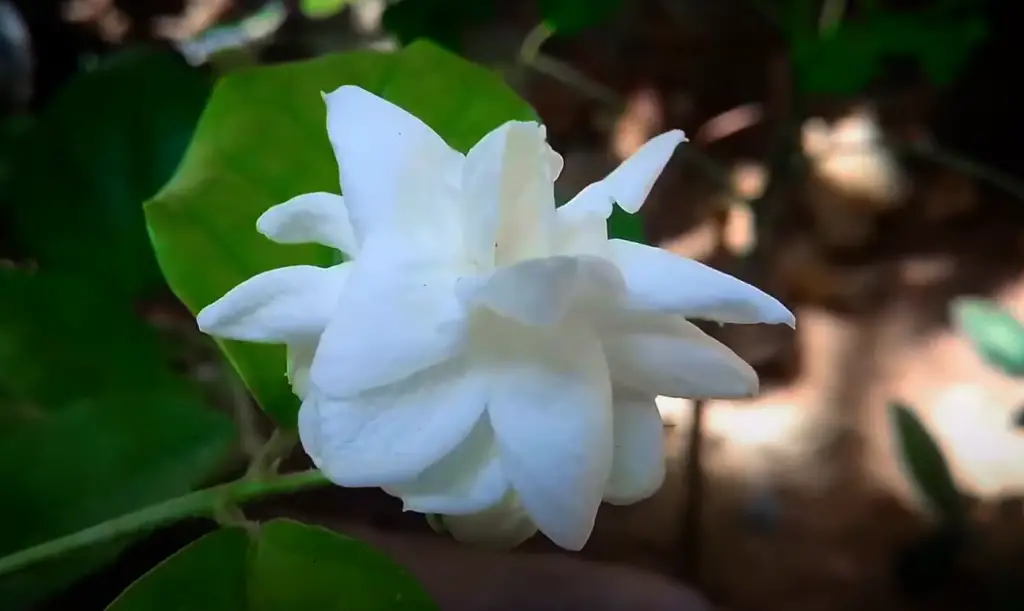
Gardenias are very sensitive to temperature changes and can suffer if exposed to extreme heat or cold for too long. On the other hand, jasmines are more tolerant of temperature fluctuations and can usually withstand both cooler temperatures and extended periods of direct sunlight without any damage.
Watering & Feeding
Both gardenia and jasmine need regular watering during the growing season, with gardenias requiring more frequent watering than jasmines. Gardenias also need a special acidic soil amendment to help them thrive while jasmine is more tolerant of a variety of different soils. Both plants should be fertilized at least twice a year with an organic fertilizer that is specifically designed for acid-loving plants. Additionally, both gardenia and jasmine require occasional mulching to retain moisture and keep the roots cool in hot climates.
Care & Maintenance
Both Gardenia and Jasmine need ample amounts of water and should be fertilized every other month during the spring and summer months. Pruning is also important to keep your plant looking neat and tidy; both types of plants respond well to pruning.
If you live in an area with cold winters, it’s best to protect your Gardenias and Jasmines from the cold by covering them with a frost cloth or burlap.Pros and Cons of Gardenia vs. Jasmine
Gardenias are known for being low-maintenance and reliable when it comes to blooming. They also don’t require much pruning, meaning they won’t take up too much of your time or energy during the growing season. The downside is that these plants may struggle to thrive in extreme temperatures — either heat or cold — so you should take this into consideration when choosing which one is best for your garden.
Jasmines are known for their bright white flowers and glossy leaves, making them a great choice if you’re looking to add contrast to your garden. They also don’t require much pruning or maintenance but may suffer from mildew or rust if not kept in check.
Overall, it really depends on what kind of look and care you’re willing to put into your garden when deciding between these flowers. If you have some time and energy to spare, both plants will make an excellent addition to any garden. However, if you’re looking for something low-maintenance that can bloom reliably, Gardenia may be the better choice.
Both Gardenia and Jasmine are beautiful foliage, with unique characteristics that make them both an ideal choice for any garden. With the right amount of care and maintenance, either one can provide a stunning array of colors and textures to your garden.
Which Smells Better, Gardenia or Jasmine?
If you’re looking for a sweet, fragrant flower for your garden, then Gardenias and Jasmines are definitely worth considering. Both of these flowers boast an amazing scent that will bring joy to any garden. But which one has the better smell?
When it comes to how they smell, both Gardenias and Jasmines have their pros and cons. Gardenia is often described as smelling like a fresh spring day or having a sweetly-spicy aroma with hints of citrus. On the other hand, jasmine has a sweeter floral scent with notes of honey and vanilla. So depending on what type of fragrance you prefer in your garden, either one can be perfect.

However, when it comes to the intensity of their scent, Gardenias have a much more powerful aroma than Jasmine. This means that if you want an intense and strong fragrance in your garden, then Gardenias are definitely the way to go. On the other hand, if you prefer a softer and subtler scent, then Jasmine is an excellent option. [2]
So when deciding which flower is best for your garden, consider both their smell as well as the intensity of their fragrance. Both Gardenia and Jasmine will provide a beautiful scent for any garden but depending on your preference one may be better suited than the other. With these tips in mind, you can make sure to pick the perfect flower for your own backyard oasis!
Gardenia and Jasmine as Perfumes
Gardenia and Jasmine are two of the most beloved fragrances for perfumes. Gardenia offers a sweet, fresh scent that is often described as being similar to rose petals. Meanwhile, Jasmine has a more musky aroma with hints of spice and honey. Both scents have been popular choices in perfumes for many years because of their distinct smell profiles. When it comes to choosing between Gardenia and Jasmine, it’s really a personal preference as both fragrances offer unique benefits.
Whichever you choose, know that you can’t go wrong with either!FAQ
Which is more fragrant: jasmine or gardenia?
Both jasmine and gardenia have incredibly strong and sweet fragrances. Jasmine is known for its exotic, night-blooming scent while Gardenia has a more traditional floral fragrance that can be much stronger when experienced up close. Which one you prefer will likely come down to personal preference, so why not try both in your garden and decide which one best suits your taste!
Do jasmine and gardenia smell the same?
No, jasmine and gardenia smell very different. Gardenia has a rich and sweet scent that is described as being reminiscent of coconut or citrus. Jasmine on the other hand has a powerful and exotic aroma with notes of honey and spice. Both plants are great for adding fragrance to your yard but you should decide which one fits your preference best. If you prefer a more subtle floral note then gardenia is probably the right choice for you, while if you’re looking for something more intense jasmine might be a better fit. [3]
Is Jasmine related to Gardenia?
No, Jasmine and Gardenia are not related. While they both belong to the family of plants known as Rubiaceae, they are two distinct species. Gardenias are native to parts of Asia, while jasmines can be found in many areas all over the world. They have very different growing habits and bloom times so it’s important to know which is better for your particular climate and needs.
Gardenias are evergreen shrubs or small trees that come in a wide range of sizes. Their dark green foliage is often glossy and fragrant white blossoms typically appear during spring and summer months. Gardenias need plenty of sunlight but also enjoy some shade when temperatures become too hot. They need consistently moist soil and are generally tolerant of drought conditions.

Jasmines, on the other hand, are woody vines or shrubs that can grow to considerable heights. Their small fragrant flowers appear in shades of white, pink, yellow or red depending on the species. They prefer full sun but also do well in partial shade and need moist, well-draining soil. Unlike gardenias, jasmine is more resistant to drought and salt damage. [4]
When choosing between gardenia vs jasmine for your garden it really depends on your climate and preferences. Gardenias have a stronger scent and larger blooms, making them an attractive choice for cut flowers or as a hedge plant. Jasmines may not be as fragrant or colorful but they are hardier and more tolerant of extreme weather conditions. Choose wisely to ensure you get the best results for your garden!
Is Cape Jasmine and Gardenia the same plant?
No, cape jasmine and gardenia are not the same plants. They each belong to different genera of the botanical family Rubiaceae. Cape Jasmine, sometimes referred to as “Gardenia jasminoides,” is a fragrant evergreen shrub with white blooms that can be found in temperate climates throughout the world. Gardenia is a flowering shrub native to tropical parts of Africa and Asia, although it has become popularly cultivated around the world due to its attractive flowers and scent. While they both share similar horticultural demands, there are some key distinctions between these two plants that can help you determine which one is best for your garden. [5]
Useful Video: Gardenia V.s Jasmine
Conclusion
Ultimately, both Gardenias and Jasmines are great plants for your garden but the best one for you depends on the conditions in your particular garden and what type of plant is best suited to them. Both have their own advantages and disadvantages that should be considered when deciding which plant to choose. Ultimately, it’s up to you! Whichever one you pick, make sure to research how to properly care for them and follow instructions carefully so your plants stay healthy and beautiful. With proper care, either can provide a stunning addition to any garden or outdoor living space! Good luck!
References:
- https://a-z-animals.com/blog/gardenia-vs-jasmine-what-are-the-differences/
- https://www.gardenfine.com/gardenia-vs-jasmine/
- https://beautymone.com/what-does-gardenia-smell-like/
- https://www.lovelyhouseplants.com/gardenia-vs-jasmine/
- https://houseplantcentral.com/gardenia-jasminoides/






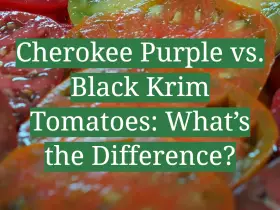
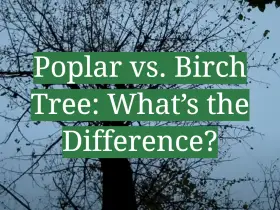


Leave a Reply
View Comments